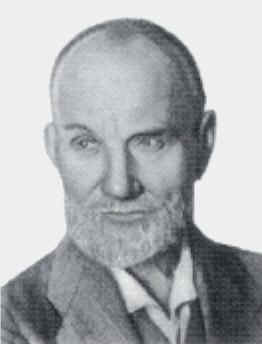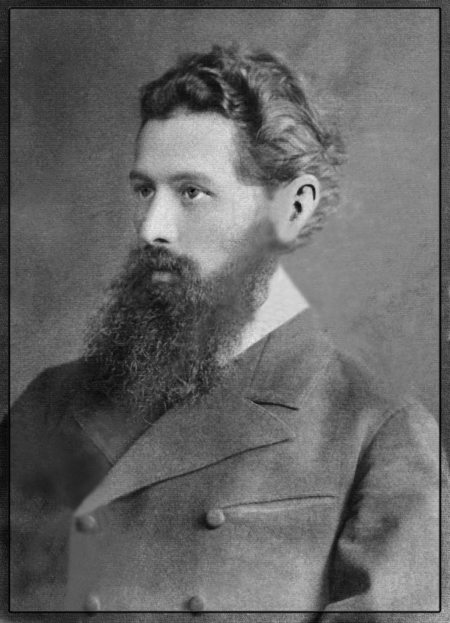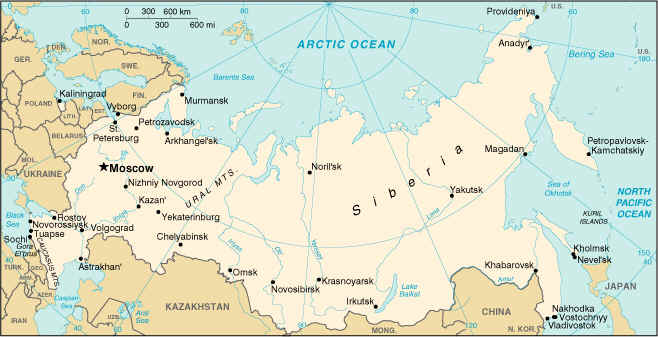1.
Introduction to the Kazan School
It is said that a French linguist called Dufriche-Desgenettes was the first person to use the term phoneme in 1873, simply to refer to a speech sound. Five years later it was found in Saussure¡¦s Mémoire sur le système primitif des voyelles dans les langues indo-européennes signifying the common ancestor of certain sounds in their parent language. However, the first people to formulate a theory of the phoneme were the Polish linguist Baudouin de Courtenay(1845-1929) and his student Kruszewski (1850-87) at the University of Kazan, during the years 1875-95. They made a distinction between the study of the physical/ physiological aspect of sounds, which they called ¡§anthropophonics¡¨ and that of the part played by sounds in the morphology of a language, called ¡§Psychophonetics¡¨; the basic unit of this second study was given the name fonema, ¡§phoneme.¡¨ In their earlier work it was used to refer to the common element linking alternating forms, in particular those that are phonetically conditioned, for example the different phonetic realizations of the English plural. However, in his book Versuch einer Theorie phonetischer Alternationen (1895) Baudouin described the phoneme as ¡§the psychological equivalent of the speech sound¡¨; that is to say the fusion in the mind of impressions given by pronunciations of one and the same sound. The speaker ¡§aims at¡¨ a sound, but the precise sound that is uttered is determined by the phonetic context.
2.
Backgrounds of the representatives
¡@
2.1
Baudouin de Courtenay (1845-1929)

Baudouin de Courtenay was born on March 13, 1845 in Radzymin near Warsaw, the capital of Poland. He is best known for his view of language sounds as structural entities rather than as mere physical phenomena, a view that anticipated the modern linguistics concerned with linguistic structure. When Baudouin studied Slavic linguistics at the University of Warsaw, he took a great interest in the psychological interpretation of language facts, a trend growing in Western European linguistics at that time. After obtaining his master¡¦s degree in 1866 he went to Prague, Jena, and Berlin, where he studied Sanskrit. Afterwards, he studied in St. Petersburg and in Leipzig, receiving a master¡¦s degree in historical linguistics. In 1872, Baudouin went to Italy to study the Slavic dialects of Rezija for which the University of St. Petersburg awarded him a doctorate in comparative grammar. From 1875-83, he was at Kazan for 8 years, where he worked closely with Kruszewski before becoming professor of Slavic linguistics at Krakow and in 1900 moved back to St. Petersburg, where he was imprisoned in 1913 for writings against the state. Released at the beginning of World War I, he returned to Poland after the war, to the newly reestablished University of Warsaw, where he died on November 3, 1929.
Albeit Baudouin specialized in comparative linguistics, he also addressed general problems, including questions of language mixture, children¡¦s speech, and the effect of linguistic structure on world outlook. However, Baudouin¡¦s principal contribution to modern linguistics was the elaboration of a theory of phonology and morphophonemics, which served as a departure point for all further research in these two areas. Baudouin de Courtenay created and elaborated the theory of phonemics in linguistics and founded the psychological (the so-called Kazan) school of linguistics.
references: http://www.philol.msu.ru/rus/izd/95sod6/shir.html
http://www.encyclopediaofukraine.com/pages/B/A/BaudouindeCourtenayJan.htm
http://www18.u-page.so-net.ne.jp/ga3/emi-a/saussure1.htm
¡@
2.2
Kruszewski, M. H. (1851-87)

Kruszewski was born to a Polish family on December 6, 1851 in Luck, and died on November 12, 1887 in Kazan, of a degenerative neurological disease.
He went to Warsaw for his university studies, enrolling for psychology and philosophy, and thoroughly absorbed the English empiricist tradition of Roger Bacon, John Locke, and Hume. After taking his master¡¦s degree with a thesis on incantations in Russian folklore in 1875, he joined Baudouin de Courtenay at the University of Kazan in 1878, having had an intensive correspondence on linguistic issues with him for several years previous to that. At Kazan, Kruszewski soon played an important role in the discussions organized by Baudouin at his home; his background in the behavioral sciences appears to have been one of the reasons for his orientation towards general theory. In his review of Saussure¡¦s Mémoire (1878) and Brugmann¡¦s ¡§Nasalis sonans¡¨ article (1876) he suggested that a distinction between ¡§zvuk¡¨(sound) and ¡§fonema¡¨(phoneme) be made, a distinction which made history many years after his death. His philosophy of science, however, which was closer to August Schleicher (1821¡V68) than to the Neogrammarians, appears to have hampered his success among the ¡§mainstreamers¡¨ of his day; it required the reappraisal of his work by Roman Jakobson (1969) and others to give recognition to his contribution to the field. Saussure was familiar with Kruszewski¡¦s writings, especially those that had appeared in German translation, and it is there that he could have found a number of ideas that are now familiar from Sausure¡¦s Cours. These include the arbitrariness of the linguistic sign, and the distinction between ¡§syntagmatic¡¨ and ¡§associative¡¨ relationships, which in Kruszewski¡¦s terms were established by the laws of association he had found in Mill¡¦s System of Logic (1843), in other words, those of coexistence and those of similarity. Kruszewski was also responsible for clarifying the distinction between ¡§Lautwandel¡¨(sound change) and ¡§Lautwechsel¡¨(sound alternation), a distinction incorporated by Paul in the second edition of his Principien (1886) without due acknowledgment. Namely, Kruszewski was quite clear about the essential difference between the historical and the nonhistorical approach to linguistic phenomena.
Kruszewski¡¦s career at the University of Kazan lasted little more than five years¡Xby 1883 when Baudouin had left for Dorpat (now Tartu, Estonia) and he himself had moved up to the highest rung of the academic ladder, his mental illness and physical problems had caught up with him. It was left to Baudouin, his former student Aleksandr I. Aleksandrov, and Friedrich Techmer (1843-91) to complete the German translation of his main work and see it through the press. The 1993 translation of his major writings in linguistic theory should ensure recognition of his legacy.
publications: Writings in General Linguistics: "On Sound Alternation" (1881) and "Outline of Linguistic Science" (1883)
Click for details: http://www.benjamins.com/cgi-bin/t_bookview.cgi?bookid=ACiL_11&f=1
More about this person, click http://kazanlinguist.narod.ru/krushonem.htm(Russian version)
references: http://www.uj.edu.pl/alma/alma/37/01/08.html
3.
The study of sound systems
In fact, the science of language must seek to understand the laws and forces that govern the nature and development of its object. For Baudouin, if the study of linguistic history¡Xthe major preoccupation of his contemporaries¡Xis to go beyond the mere establishment and recording of historical facts and become genuinely explanatory, it must be based on an understanding of the synchronic nature of linguistic systems. There are two major reasons for this necessity, one somewhat practical and the other a mater of basic principle.
On the one hand, it is living languages that are directly available for study: prior stages of linguistic history can be known only inferentially or, at best, through written records, which constitute only an indirect representation of a language, and not an actual language itself. Living languages must thus have basic priority as evidence for ¡§the forces operating in language, and for the laws that govern its development, its life.¡¨ We should note here that while Baudouin criticizes the descriptive, empirical study of languages for its own sake, he also stresses that a thorough knowledge of living languages is an essential preliminary to any attempt at theorizing and explanation.
On the other hand (and more importantly), it is in the forces that govern synchronic systems that we find the underlying principles leading to historical change. Therefore, We must give priority to the search for the general laws that govern the systems of living languages. This emphasis was particularly appealing to Kruszewski, whose arrival in Kazan contributed greatly to the stress put on such matters in Baudouin¡¦s work from that point on. Kruszewski hoped to be able to formulate a small number of fundamental laws of the nature of language, principles which would have the sort of richly deductive, explanatory scope attributed to the ¡§principle of association¡¨ in psychology.
Kruszewski¡¦s (and Baudouin¡¦s) goal, in the context of the prevailing interest in historical linguistics, was to make linguistics a natural science with an explanatory, not simply inductive, character. If linguists could be freed from their concern with history as the recording of more or less accidental events, they would be able to focus on what is truly essential to the nature of language. Accounts of linguistic structure could then be founded deductively on general laws of syntactic structure. It is interesting to note that half a century later, Trubetzkoy (1933) would claim as a major merit of the developing theory of (Prague school) phonology that it concerned itself with the search for such general laws¡Xa methodological ¡§advance¡¨ which was in fact at the heart of Baudouin¡¦s and Kruszewski¡¦s as well.
Kruszewski presents the nature of language as ultimately a network of two sorts of associations between linguistic forms: associations based on simultaneity, or parallelism of structure, and associations based on sequence, or frequent juxtaposition in larger structures. These are essentially the same as Saussure¡¦s notions of associative (paradigmatic) and syntagmatic relations between forms. On the basis of such relations of simultaneity or sequence, words form families; these are also called ¡§nests¡¨, since the relation of one word to another results in further layers of relationship between the first word and others to which the second is, in its turn, related. Such a system of relational networks among forms is the structural basis of a language, and knowledge of such a system of similarities of morphological structure and contiguous combinability constitutes ¡§knowledge of the language¡¨.
In order to formulate an explanatory theory of linguistic change, understanding the nature of such a system of associations is essential. This is particularly the case with regard to changes due to ¡§analogy¡¨ and ¡§folk etymology¡¨, which Kruszewski treated as instances as the same kind. According to his view, such changes illustrate the central role played by the factor of reintegration in language. For Kruszewski and Baudouin, language is not simply a matter of mechanical repetition but, rather, involves constant (re)recreation of the particular structures used in speech; thus, linguistic forms are constantly subject to the necessity of finding their place in the associative system.
4.
Influences to the other school
The Kazan school influenced the Prague school. Please check the details at the ¡§Prague school¡¨ part of this website.
The notion of 'morpheme', closely associated with the notion of 'phoneme' and with a synchronic conception of language, was first conceptualized in the beginning of the 1880s by Jan Baudouin de Courtenay and Mikolaj Kruszewski in Kazan. In Russian linguistic thought, it was the outcome of a long-distance conflict between syllabism (associated with word) and morphematic intuition. In this conflict we can see influences received from other countries, especially from Germany, as well as influences based on the specific character of the Russian language and from Russian grammatical and cultural traditions. This conflict has never been entirely resolved; we can still find it today in the opposing conceptions of the phonological schools of Moscow and St Peterburg.
references: http://www.benjamins.com/jbp/journals/Hl/Hl_281.html
¡@
¡@
¡@
5.

references: http://www.cia.gov/cia/publications/factbook/geos/rs.html
Anderson, Stephen R. (1985). Phonology in the Twentieth Century: Theories of Rules and Theories of Representations. Chicago: University of Chicago Press.
Asher, R. E. (ed.)(1994). The Encyclopedia of Language and Linguistics. New York: Pergamon.
Jakobson, R. (1972). The Kazan school of Polish linguistics and its place in the international development of phonology. In: Jakobson, R. (ed) Selected Writings. Vol. II: Word and Language. Hague: Mouton.
Kruszewski, M. (1993). Writings in General Linguistics: On Sound Alternation. An Outline of Linguistic Science. Amsterdam:John Benjamins.
Saussure, Ferdinand de. (1879). Mémoire sur le système primitif des voyelles dans les langues indo-europeennes. Teubner: Leipzig.
¡@
References:
http://www.xrefer.com/entry.jsp?xrefid=570645
http://www.marxists.org/reference/subject/philosophy/works/ru/jakobson.htm(more details on Roman Jakobson)
¡@
http://www.marxists.org/glossary/people/s/a.htm#saussure-ferdinand-de(more details on Ferdinand de Saussure)
¡@
ggf
¡@